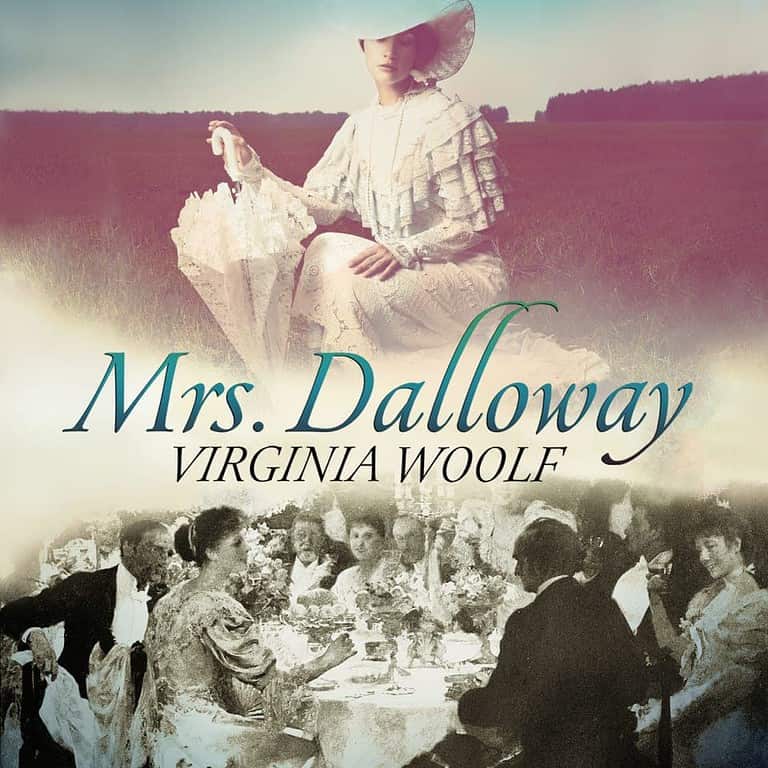Time and space are tightly knit as structural elements. The story spans one day and London is constantly called up through allusions to well-known places: Westminster, Bond Street, Regent’s Park, and Picadilly Circus. Space and time are closely linked.
A day in Mrs Dalloway’s life
Mrs. Dalloway is not old: she is 51. She is from the British ruling class. On the surface level, the day’s events are chronologically organised. At night, the party takes place. The guests are important people of the kingdom.
The story starts in the morning when Mrs. Dalloway prepares to buy flowers. The story closes when the guests are leaving, at 3 AM. It therefore consists of two episodes, the starting and the closing of the perfect hostess.
A series of events and incidents occur between the opening and the closing. Some of these events are commonplace whereas others will have repercussions in the main protagonists’ consciousness: in Mrs Dalloway’s and Walsh’s.
The events are chronologically organised. The passing of the day is marked by the bells and chimes of Big Ben. The most important events take place in threes or multiple of threes. At 12, Warrensmith has an appointment at Bradshaw’s. Bradshaw decides to have Septimus sent to a mental institution. At 3 PM, Richard Dalloway comes into Clarissa’s room with a bunch of flowers. Richard is not able to express his feelings with words. 3 PM (in the past) is also an important moment in Clarissa’s mind for the break with Peter became definitive 30 years ago. At 6 PM, Septimus jumps out of the window.
Minor incidents
The commotion of an influential person in a black car – it might be the Queen or the Prime Minister. The windows are blind and a tree is printed on them. We do not know who is inside and it stirs a wave of excitement. A plane is sky-writing and drawing letters.
The plane and the cars are ways of referring to an event that all the characters in the story will see almost at the same time. Mrs. Dalloway does not know Septimus but the plane and car are the links between them.
Minor events are fragmented incidents used to call up a new form of realism based on events which are neither spectacular nor extraordinary but which nevertheless constitute the texture, fabric, and substance of existence. A day is also made of minor incidents, often forgotten with time.
Important events
“Mrs. Dalloway” is about a few troublesome incidents and the day is upset by more important events.
At 11 PM, while busy with her dress, Peter pays a visit after a long absence in India. This unexpected visit rakes the ashes of the past and brings strong feelings back to the surface: Mrs Dalloway has never stopped loving Peter, even if she chose to jilt him.
Another encounter in the evening: Mrs Dalloway recognises Sally Seton, now Lady Resseter, the wife of a rich Manchester industrialist. Mrs Dalloway remembers when they were teenagers: Sally was a non-conformist, committed to reforming the world and vindicating women’s rights – she was an anarchist. Mrs. Dalloway was fascinated by Sally and what she felt for her was akin to love.
Finally, Mrs Dalloway’s state of agitation is heightened by a devastating piece of news she indirectly learns during her party: a tragedy has taken place with Septimus’ suicide. It does not concern her personally but it is going to affect her strangely and profoundly.
The central ellipsis
Woolf introduces a character unrelated to the Dalloways’ relation circle: Septimus Warren Smith. Woolf decided to have two different plots that run parallel simultaneously: the preparations for the party and the events that lead to Septimus’ suicide.
Septimus, 30, escaped unscathed and is shown walking with Rezia, his Italian wife. The reader understands quickly that Septimus has undergone a traumatic shock during the war. He has completely lost touch with reality. He is closed within his subjectivity and a prisoner of nightmares and hallucinations. Little by little, he is sinking into self-destructive madness.
Woolf aimed at joining two apparently unconnected stories and bridging the gap that separates Mrs Dalloway and Septimus. The character that serves as a link between Mrs Dalloway and Septimus is William Bradshaw, who is invited to the party. Lady Bradshaw relates the tragic incidents to Mrs Dalloway to apologise for being late.
The piece of news is mentioned casually but happens to move Mrs Dalloway and have resonances in her mind. The decision to kill oneself finds deep echoes with Mrs Dalloway’s inmost self. Woolf intended Septimus to be Mrs Dalloway’s double. In the previous version, “The Hours”, Woolf had Mrs Dalloway commit suicide.
Conclusion
There are important correspondences between Septimus and Mrs Dalloway, even if they never get physically in contact. To a certain extent, Septimus and Mrs Dalloway are supposed to be the two sides of one single character, through the technique of subjectivity.

